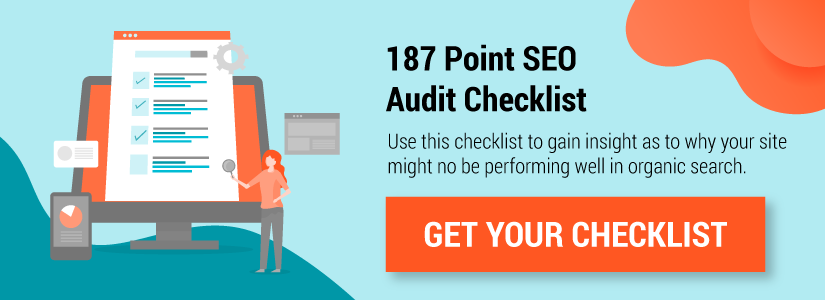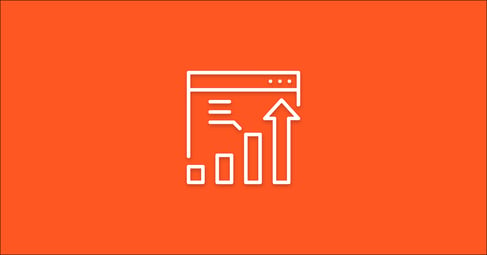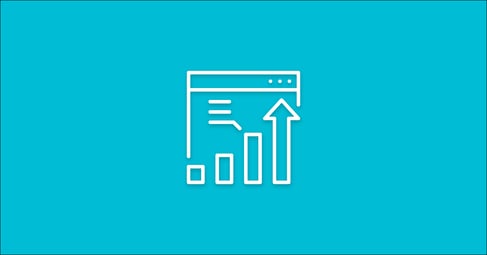
Written By:
Kaisley Alvarez
There are numerous ranking factors that marketers need to be aware of and resolve to remain competitive in website optimization. While most business owners invest time focusing on their on-page SEO, there is one crucial element that’s often overlooked.
Page speed.
After all, how can you expect users to wait for more than a couple of seconds for your page to load when thousands of other websites provide the same information quicker?
In this article, you'll learn about:
- Why Google cares about your website's speed
- How speed affects the page experience
- Why speed is crucial for your website and business
Why does Google care about your website’s speed?
You might be wondering why Google would care about the speed of your website. Although there's no definitive answer, their recent page experience update may shed some light on this. The reasoning for this amendment has been cited as a way "to build a web ecosystem that users love."
With this in mind, let's go deeper and analyze why Google classifies speed as an essential ranking factor and a key element of the user experience.
People Go Where Speed Is A Priority
The need for speed and convenience continues to grow exponentially over the years. Instantly receiving information, goods, and services have become the new norm.
For example, consider fast-food restaurant drive-through services’ influence in society. This quick and convenient service has slowly made people more accustomed, and in many cases, reliant on this type of speed. As a result, restaurants today are subject to more criticism if their service is “too slow.”
The same principle goes for Google search engines. Internet users have learned to expect the best from Google and are very critical when it fails to deliver. They need to provide users with the most relevant websites as efficiently as possible, every single time.
Google’s Reality
The bottom line is, not only does Google have to live up to its reputation, but they also have to stay competitive with other search engines.
Google might be the most renowned search engine in the world, but that doesn't mean they have any room to relax. On the contrary, maintaining that notoriety is a grueling process.
Google delivers on its worldwide expectations by offering users the most efficient and relevant websites, guaranteeing accuracy and speed every time. This interaction is crucial since users go in and out of websites during these types of searches, all while clicking on ads in the process. Resulting in more revenue for Google.
Speed and Page Experience
As mentioned before, the best way to understand the importance of speed is by analyzing how users interact with your webpage. Website visitors are no longer patient during loading times.
Why? Well, because they don't have to.
Slow Speed Frustrates Users
Imagine sitting at a computer and having to wait seconds for a web page to load. Even though this doesn’t seem like a long time, these seconds can feel like an eternity to your users.
Why is this so important? The user’s first impression of your site is usually formed during this loading time. Depending on how long this is, it could make or break your business.
Now, with this in mind, think about the possible consequences of this exchange. It’s likely that during this long loading process your audience had enough time to think about the other options available to them. The minute users decide your content is not worth waiting for, they'll abandon their search and no longer pursue any possible purchases. Not taking loading speeds seriously can harm the authority of your website and can even result in lost revenue.
Ranking Factors For Speed Continue To Evolve
It’s clear that our standards for speed and efficiency continue to evolve in every aspect of our lives, but how does this translate in SEO?
Sure, you don’t want to wait in line at the store when you can get an item shipped directly to your house. Of course, you prefer watching your favorite shows commercial-free, rather than with constant interruptions. But what are the expectations of your website’s convenience?
Users worldwide expect more and more from their online experiences. Technology has grown exceptionally, providing faster network speeds and devices to the everyday user. And even though this results in higher speed expectations, it has also driven the improvement of Core Web Vitals—an essential tool for optimizing websites around the world.
The improvements of these metrics for each region are clear in the graph below:
Source: Web Almanac by HTTP Archive
It’s important to note that certain parts of Asia and Europe have significantly higher performance compared to the rest of the world due to their access to more accelerated technology. However, it does not negate that other regions will use these higher speed capabilities to benchmark what they should try to achieve in the future. Therefore, as the industry standard shifts, so do expectations for page experience.
The effects on peoples’ dynamic web expectations undoubtedly trickle down to all aspects of online marketing.
Even the web development process has raised the bar, as people expect a functional website and a fast one! As a result, webmasters and developers need to close the gap, avoiding shortcuts in website development that no longer live up to today's higher standards.
Important Speed Factors To Consider
There's no doubt that you'll need to check your website's Core Web Vitals since they are directly responsible for the speed of your website.
To review these metrics and their importance, be sure to read our guide on Core Web Vitals for more context.
There, you’ll learn that the framework measures your website's performance. The metrics (Largest Contentful Paint, First Input Display, and Cumulative Layout Shift) have given business owners and marketers a clear blueprint for a successful website that attracts new users and higher rankings.
Here are some case studies of just how essential these metrics have been for businesses:
- NDTV, one of India's leading news stations and websites, improved their LCP by 55% and saw a 50% reduction in their bounce rates.
- Swappie improved all three of their Core Web Vital metrics and achieved a 42% increase in mobile revenue.
- SportsShoe.com noticed that faster mobile visits were 41% more likely to convert than slower visits after improving their metrics.
Mobile Usability
For the most competitive and efficient version of your website, you must ensure it’s fast on desktop and mobile. Smartphones have become part of our daily lives, having a mobile-friendly website is not just about staying ahead of the competition. It is an essential requirement for any website on the Internet and, therefore, a critical element for every business owner's website.
Consider Almanac's data which identifies the number of websites that have reached the "good" category on all three Core Web Vitals metrics for both desktop and mobile devices. The study shows the growing efficiency of the entire web as thousands of websites have made improving page experiences their top priority. Having a functioning website now requires higher numbers for both desktop and mobile devices, meaning that business owners can no longer rely on the efficiency of the desktop version alone.
Source: Web Almanac by HTTP Archive
What does this mean for you?
Ignoring the reality of these new expectations could result in your website staying behind the curve. The web landscape has evolved and drastic changes are needed just to keep up. Gone are the days of browsing the internet in front of a big screen. Today, nearly everyone is carrying a computer in their pocket!
Not only that, but users are even less forgiving when it comes to slow websites on their phones. Smartphones are supposed to make our lives easier. While in a rush, users don't think twice about clicking off a website that is not giving them what they need when they need it.
Why Speed is Nonnegotiable
Many businesses are still dragging their feet on this issue, despite the added benefits of providing their users with an excellent page experience through speed.
However, this might not be the case for long.
As some businesses decide to put it off, many will seize the opportunity and make their websites more efficient than ever. This causes a significant gap between the businesses owners and websites who are concerned about improving their speed from those who do not.
Business owners not taking part in this critical optimization opportunity are, by default, significantly risking losing their position on search engines results and the overall competition.
What Are The Risks Of A Slow Website?
You might be unaware of the effects your inaction will have on your website, but that doesn’t mean these ramifications don’t exist. So, here are some of the possible consequences:
1. Customers experience friction
By ignoring speed and page experience, you are inadvertently causing friction for your customers. As a result, the constant struggle to interact with your website makes the buying journey far more complicated than it should be.
2. Missing out on increased revenue
A slow website is undoubtedly affecting your bottom line. Potentially hundreds or thousands of customers could get too frustrated with your website and decide to leave. And, of course, there's always a chance that a number of these users who clicked away had the intention of buying.
3. Losing top-rank content
The longer you wait to resolve your website's speed issues, the more likely your already high-ranking content could drop in the search results. By putting this at risk, you are also opening yourself up to the possibility that your content might be kicked off by other competitors with faster websites.
Improve Page Experience
By understanding the benefits and importance of a fast website, we hope that you'll consider giving your users the best page experience possible.
Take a look at your website, assess what it needs to stand out and compete, and give users a reason to return.
To get more oriented on your website’s health, use our 187 Point SEO Audit Checklist!







